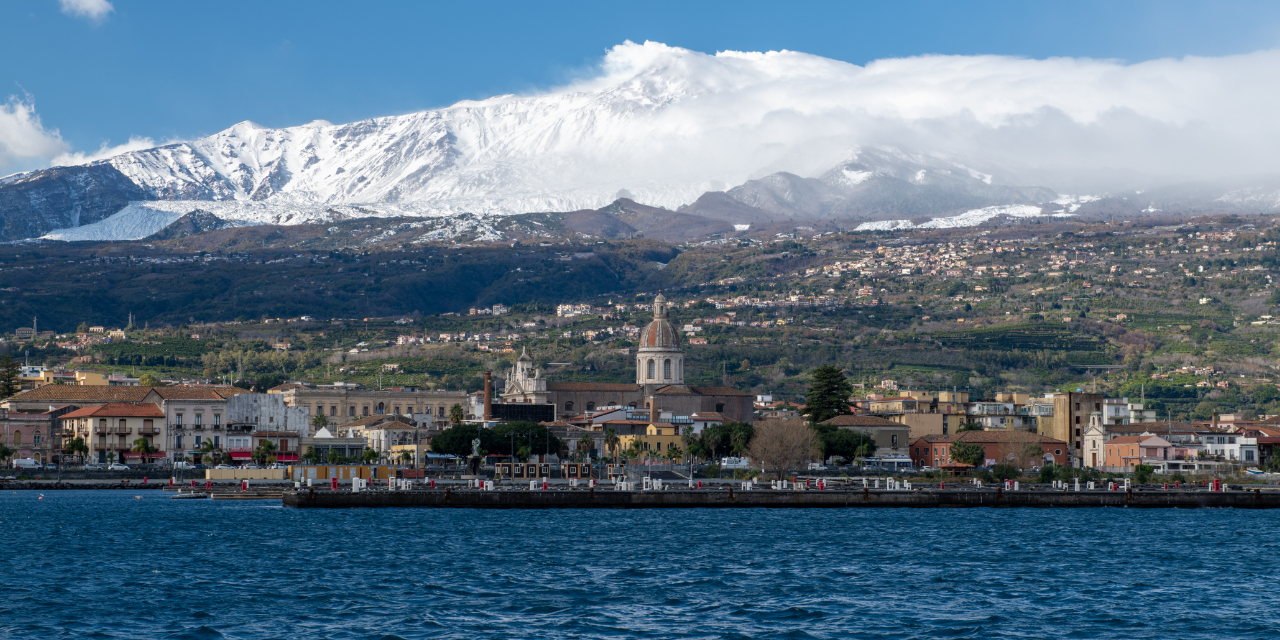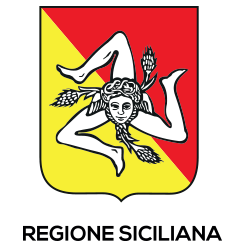No, it is not Mars, it is the bald summit of Etna, Europe’s highest active volcano. Arriving at the 1900-metre altitude of the Rifugio Sapienza, one has the impression of being on a different planet: the total absence of vegetation, however, is not due to the altitude or the lack of oxygen, as is the case on some peaks above 2000 metres, but to the fact that fire and lava are bubbling underground.
If you decide to cycle up one of the many slopes available, please be careful, as at the summit winds often blow so hard that it becomes impossible to stay in the saddle. “Etna is our Mont Ventoux” said the then director of the Giro d’Italia Angelo Zomegnan in 2011. And indeed, the juxtaposition seems to make sense.
The “mumbling” Etna overlooks eastern Sicily, between the Nebrodi mountains and the Catania plain, and is the highest Italian peak south of the Alps. Each side of the volcano has its own distinctive traits: on the eastern and southern side, up to 1,000 metres above sea level, the land is cultivated, and the area is heavily urbanised, while it is wild and barren on the western side.
Less urbanised, but with a gentler appearance, is the northern slope, with mostly wooded area above the village of Linguaglossa, while the eastern side is dominated by the slightly menacing appearance of the Valle del Bove and its thick forests. Approaching the peak of the volcano, however, all the vegetation quickly fades away.
The Giro first included Mount Etna in its route in 1967, with stage win going to “crazy heart” Franco Bitossi, and then in 1989 with the success of Acacio Da Silva.
Unfortunately, the lack of entertainment due to the heavy wind, which discouraged the riders from attacking, prompted the organisers to shelve it for a while. Since 2011, however, Etna has returned to semi-stable status, having been tackled six times in eleven years, though not always from the same sides or with the same arrivals, starting from Nicolosi, the most iconic side, as in 1967, 2011 and 2017, or from Paternò, as in 1989, 2018 and 2022, and arriving at Rifugio Sapienza or, only once, in 2018, at the Astrophysical Observatory. In 2020, however, when Jonathan Caicedo won, he climbed the volcano starting from Linguaglossa and arriving at Piano Provenzana.
Ever since the Giro di Sicilia returned to the calendar on a permanent basis, i.e. from 2019, Etna has always played a key role in determining the outcome of the race. In 2019, it was climbed from its most traditional side, namely Nicolosi, with Guillame Martin winning the stage and Brandon McNulty defending himself and taking home the general classification.
In 2021, instead, a different area of Etna was chosen, not climbing all the way up to the 1,900 metres of Nicolosi, but stopping at the 670 metres of the Sciara di Scorciavacca, tackling the ascent from the village of Mascali. The “Sciara” is nothing other than a lava field formed following the eruption of Etna in 1651, which led to the development of a lava flow cave called the Grotta Forcato.
But the Scorciavacca area conserves the memory of much older eruptions and is one of the most interesting parts of Etna in terms of geology, nature and landscape. On that day, home idol Vincenzo Nibali claimed the last two victories of his career, taking home both stage and GC.
This year’s edition will feature a sort of mix of the previous editions, since the riders will climb Mount Etna from Linguaglossa to the village of Due Monti, just below Piano Provenzana, and then descend towards Fornazzo and Nunziata, where they will begin the decisive climb to the above mentioned Sciara di Scorciavacca. The final descent to Giarre will unveil the winner of the Giro di Sicilia 2023.




























